|
Canals
Coseley’s rich mineral deposits
were being exploited by the beginning of the 17th
century when licences were granted for the mining of
‘sea cole and ironstone’. At that time, roads were
only dirt tracks, which were totally unsuitable for
heavily laden vehicles and often impassable after
periods of heavy rain. Any minerals mined, must have
been used locally, as it was impractical to
transport them over any great distance.
By the 18th century, there was
a great demand for coal to supply Birmingham's many
industries. Coal was in abundance in the Black
Country and so plans were made for the building of a
canal to transport it there.
The first canal in the area was
the Staffordshire and Worcestershire Canal,
connecting the River Severn at Stourport to the
Trent and Mersey Canal at Great Haywood. Building
work on the canal, surveyed by James Brindley, began
at Stourport in 1768. The canal was navigable as far
as Compton in November 1770, and opened in its
entirety in 1772.
In January 1767, a public
meeting was held in Birmingham to discuss the
building of a canal from Birmingham to the
Shropshire and Worcestershire Canal, via
Wolverhampton and the Black Country's many coal
mines. By August, sufficient capital had been raised
to fund the project, and a Bill allowing
construction was passed in Parliament in February
1768. The Birmingham Canal Navigations was
incorporated on 2nd March, with James Brindley as
engineer.
In 1768, work quickly got
underway. The Wednesbury line was completed in 1769,
allowing coal to be transported to Birmingham from
collieries at Hill Top. The first boat load of coal
bound for Birmingham left on the 6th November, 1769.
By 1770 the canal reached
Tipton, then followed an extremely circuitous route,
along the natural contours, to avoid the high ground
in the Coseley area. James Brindley was a great
advocate of contoured canals, to avoid the building
of locks wherever possible, the excavation of
cuttings and the digging of tunnels. The canal
skirted around Bloomfield, towards Wednesbury,
before doubling back on itself to follow a loop
through Bradley to Deepfields.
Wolverhampton was reached in
August 1771, but the final downhill section to
Aldersley Junction took another year to complete,
because it required the building of 21 locks.
Initially 20 locks were built, but because of the
large drop at the bottom lock, an extra lock was
added. The Canal opened on 21st September, 1772,
just 8 days before Brindley's death. |
|

Canals, railways and
Birmingham New Road. |
|
The finished canal was over
22½ miles long and covered just over 12½ miles
as the crow flies. Other branches soon followed,
including the Ocker Hill Branch, built in 1774,
which was included in the original Act.
The Walsall Canal was built
under the terms of an Act passed by Parliament
on 24th June, 1783, which included the Toll End
Branch. It was surveyed and designed by John
Smeaton, the first self-proclaimed civil
engineer. The canal had eight locks at Rider's
Green, and reached Wednesbury in 1786. It
finally opened to Walsall in 1799.
In 1796, work began on the
Bradley Branch, which joined the Walsall Canal
to the old main line, via a flight of nine
locks. It also bypassed the Bradley Loop and
opened in its entirety in 1849.
The original Birmingham
Canal, known as the old main line, had one draw
back, which was the extra ten miles or so that
had to be covered by the circuitous route around
the high ground in Coseley. In 1824, Thomas
Telford was engaged to survey a canal to bypass
much of the route through Bradley, and go
directly through Coseley.
An Act for the building of
the canal was passed in June 1835, and work soon
got underway. Telford decided to tunnel under
part of Coseley in a 360 yard, brick-lined
tunnel, with a deep cutting at either end. The
tunnel was built with a brick-surfaced tow path
on either side of the canal, so that boats could
pass one another in the tunnel, without waiting
to queue. The section from Deepfields to
Bloomfield, including the tunnel, opened on 6th
November, 1837. The new mainline was completed
in April 1838. It is seven miles shorter than
the original route, and very straight. |
|
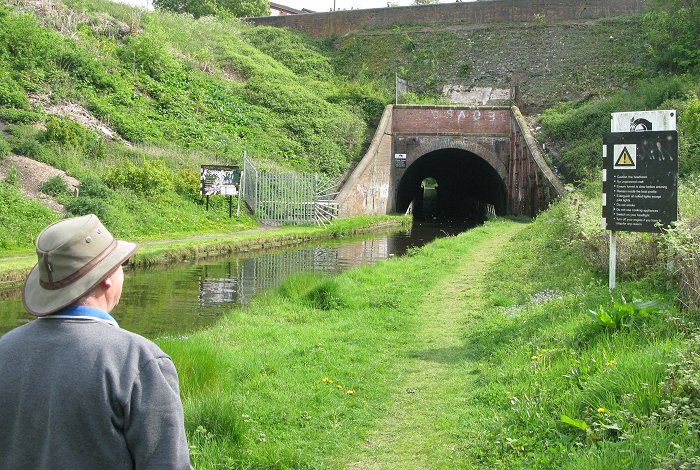
The northern end of
Coseley Tunnel in 2014. |
|

Another view of the northern end of Coseley Tunnel in 2014. |
|
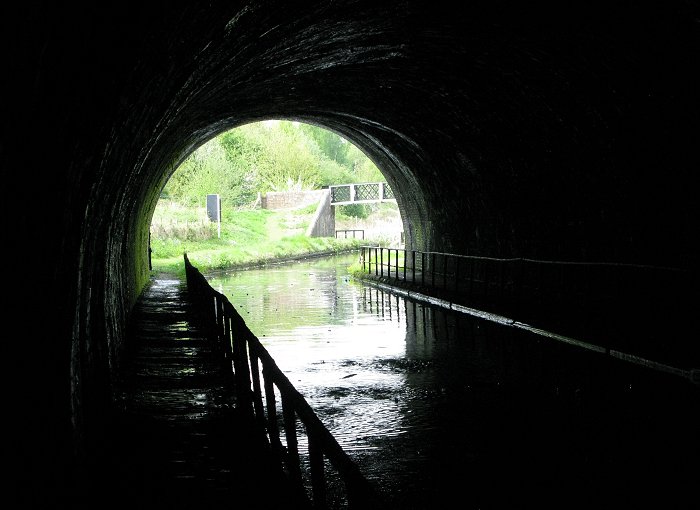
Inside the Coseley Tunnel. |
|
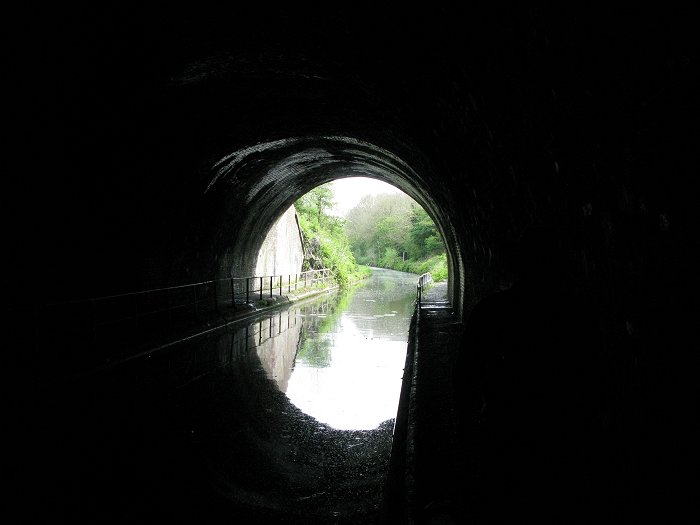
Looking towards the
southern entrance. |
|
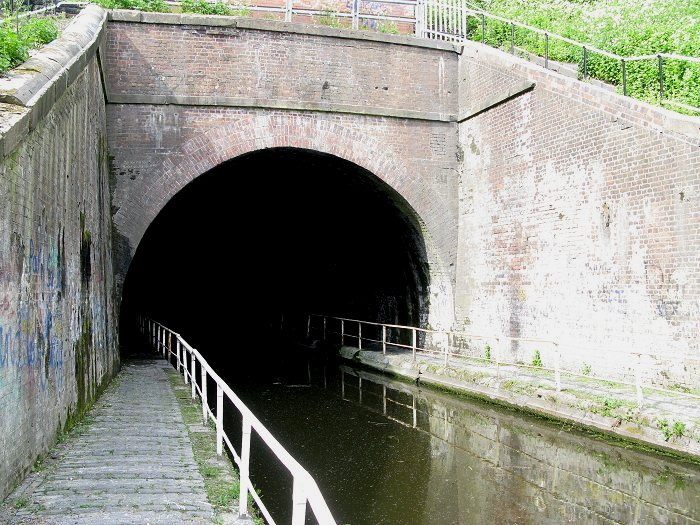
The southern entrance
to the tunnel. |
|
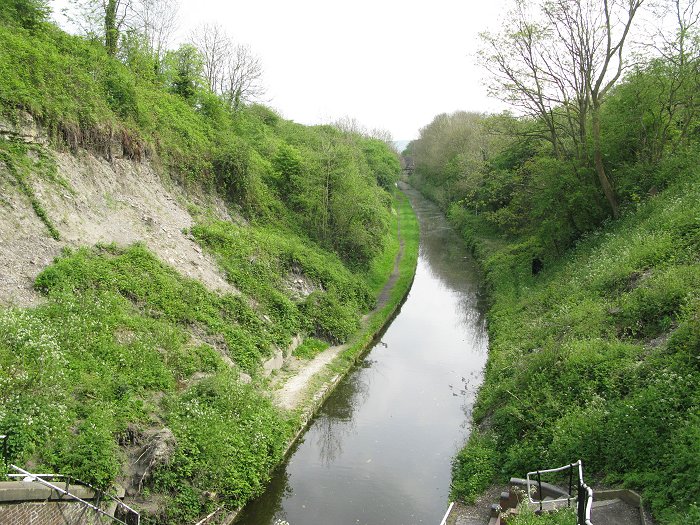
The cutting on the
southern side of the tunnel. |
|
The new canals were a great
success. For the first time, goods of all kinds could be
cheaply and reliably transported over long distances.
The large quantities of coal, limestone, raw materials,
and finished goods that were transported on the canals
at the time, made the canal companies very wealthy,
greatly benefiting their shareholders. Large factories
sprung-up alongside the canal, and the population of
many local towns rapidly grew thanks to the employment
on offer. The cost of some of the items for sale in the
shops fell, due to large scale manufacturing and ease of
transport, and a greater variety of goods could be found
in the shops.
The canal network was connected to
sea ports, so that manufacturers could easily export
their products, and many imported goods were readily
available for the first time. The falling cost of coal
encouraged new industries to develop, and reduced
people’s heating bills.
One of the most successful carriers
and boat builders in the Black Country was Thomas Monk,
whose business began at a small boatyard in Tipton. He
had around 130 boats carrying all kinds of goods between
the Midlands, North Staffordshire and London. Thomas was
credited with the introduction of cabins on canal coats.
The boats became known as 'Monkey Boats', a name that
was eventually applied to all boats on the canal that
carried a cargo.
Around 1820 Thomas introduced a
passenger service between Factory Bridge at Tipton and
The Wagon and Horses at Birmingham. He built a specially
designed boat called 'Euphrates', a fly boat with
rounded sides and a keel so that it could travel quickly
through the water. It was of lightweight construction
with a wedge shaped front. The horses travelled at an
unbroken trot and were changed every few miles.
'Euphrates' became known as the 'Monkey Fly Boat' and
was captained by a local man, John Jevan. It operated a
two-hour passenger service from Tipton to Birmingham on
Mondays, Thursdays, and Saturdays, leaving Tipton at a
quarter past eight in the morning, and returning from
Birmingham at 5 o'clock on the same day. It called at
Dudley Port, Oldbury, Spon Lane, and Smethwick. On
Tuesdays, Wednesdays, and Fridays it was available for
private hire, and excursions.
In 1830 the service was extended to
Wolverhampton, running daily along the old main line.
After the building of the new main line, 'Euphrates'
also ran from the Packet Inn at Wallbrook to Birmingham
in two and a half hours, through the newly built Coseley
Tunnel. The boat continued to carry passengers until the
Stour Valley Railway opened in 1852. It was then stored
at William Monk's yard at Selly Oak.
William White includes the
following entry in his 1834
History, Directory and Gazetteer
of Staffordshire:
Carrier by Water - William.
Turley, from Highfields to
London, Shardlow, Liverpool,
Manchester, Gainsborough, Hull,
etc.William White includes the
following entry in his 1851
History, Directory and Gazetteer
of Staffordshire:
Swift Packets, four times a day,
with passengers, etc. To Birmingham and Wolverhampton,
call at Deepfields. |
|
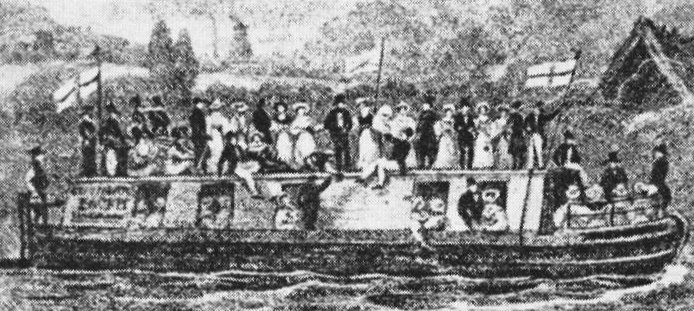
Euphrates. |
| Coseley was home to one of the largest canal
carrying companies in the area, which specialised in
transporting chemical waste, such as waste phosphorus
from Albright & Wilson, in Oldbury. Alfred Matty & Sons
were based in the large canal basin, in between Biddings
Lane and Anchor Lane. The basin, although no longer in
use, still survives. The firm, which owned a large fleet
of boats and some motorised tugs was well known in the
area. In the 1980s, the business became part of
Dewsbury and Proud Limited, a crane hire company. |

Some of Alfred Matty's boats, at
the entrance to the canal basin in 1980. In the distance
is Anchor Bridge at the end of Anchor Lane. Courtesy of
Dave Necklen. |
|
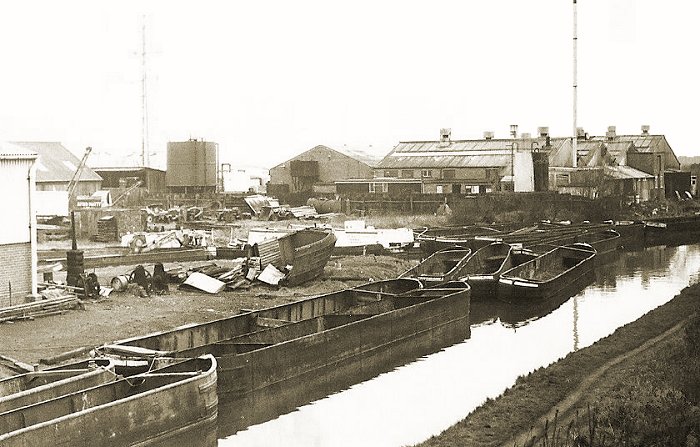
Matty's basin and yard. |
 |
|
 |
|
 |
Return to
Churches |
|
Return to
the
Contents |
|
Proceed to
Railways |
|